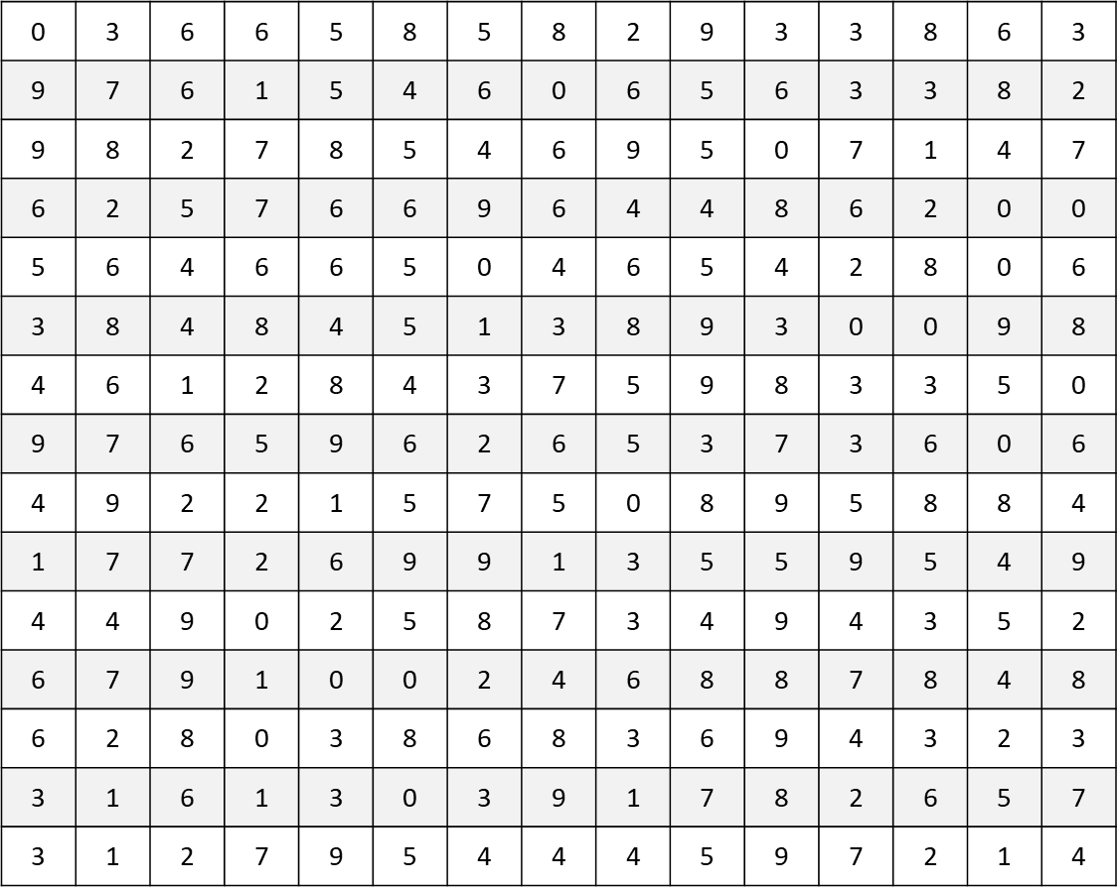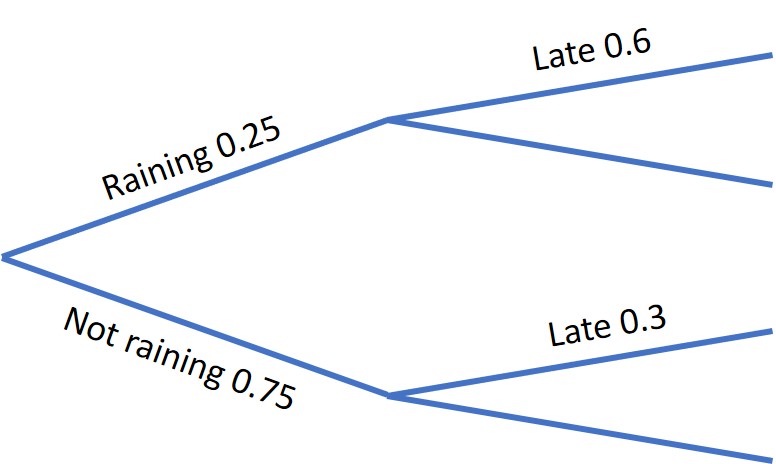

Prices went up by 2% in 2003, 3% in 2004 and 2.5% in 2005.
If an item cost £32 at the start of 2003 what would it cost at the end of 2005?
From "Foundation GCSE Mathematics For WJEC: Homework Book"
Start with £32
In 2003 the price goes up to:
32 + (32 ÷ 100 x 2) = £32.64
In 2004 the price goes up to:
32.64 + (32.64 ÷ 100 x 3) =£33.62 (nearest penny)
In 2005 the price goes up to:
33.62 + (33.62 ÷ 100 x 2.5) = £34.46 (nearest penny)

Find the below numbers in the grid.
The numbers can be in any direction: backwards, forwards, up, down, or diagonally.
| 128036 | 438795 | 638358 |
| 132798 | 456405 | 658582 |
| 170596 | 466855 | 689972 |
| 247495 | 473829 | 782657 |
| 257669 | 488671 | 826867 |
| 274797 | 489151 | 855033 |
| 376203 | 524548 | 865664 |
| 389980 | 606563 | 868369 |
| 400950 | 608607 | 954445 |
| 414663 | 626528 | 989895 |
From www.puzzles-to-print.com
Dafydd is late 60% of the time when it is raining and 30% of the time when it is dry. it rains on 25% of days.
Find the probability that:
Adapted from "Higher GCSE Maths" by Michael White
The resultant probability tree:

A group of fifty soldiers suffered the following injuries in battle:
What is the minimum number of soldiers to suffer all four injuries?
Adapted from: "Einstein's Riddle" by Jeremy Stangroom
Total number of injuries = 36 + 35 + 40 + 42 = 153
Total number of soldiers = 50
150 ÷ 50 = 3 with a remainder of 3.
Therefore, a minimum of three soldiers had all four injuries.